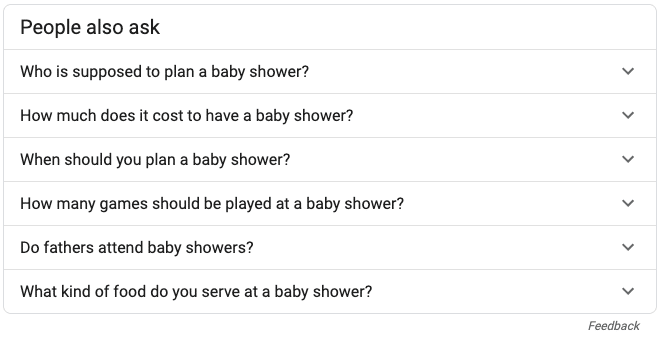SEO Content 101: Your Guide to SEO-Friendly Content
Category: Search Engine Optimization | Tags:
Search engine optimization (SEO) is an important facet of your digital marketing strategy because it can help you get found by customers that are ready to buy from you.
Table of Contents
SEO & Content Marketing: A Match Made in Heaven
Content is one of the main driving forces behind SEO. Write great content that is informative and that fulfills user intent. This will help you rank on Google, earn backlinks to your website, and build your website’s authority on the web.
So, what is content? Here at Avalanche Creative, we define “content” as any information that can be consumed on your website. We must, however, make a distinction between “content” and “copywriting”. Content serves to inform, while copy serves to persuade.
In truth, the link between SEO and content marketing is this: SEO can’t exist without content marketing. In a way, SEO states a list of demands that content marketing can fulfill. Content marketing incorporates the use of keywords, earning backlinks, and even some of the more technical aspects of SEO that prioritize user-friendliness.
To sum it up, good SEO doesn’t exist without content marketing, and the same is true vice versa. Here are some of our best recommendations for using content to drive your website’s SEO.
SEO Content Writing: Getting Started
If you’re looking to create SEO-friendly content, start by creating user-friendly content. After all, Google’s algorithm aims to show searchers the results that fully answer their queries.
Here are some ways to create user-friendly content.
Use Keywords
Before you start writing, it’s important to begin with keyword research. Find which keywords are related to your products or services that have high search volume, but lower competition.
These keywords will likely be medium-tail keywords or long-tail keywords that are a bit more specific. Shorter keywords like “baby shower” will have a higher search volume, but are more difficult to rank for. (That’s because it’s harder to tell what the user intent behind this query is.)
Use your primary keyword in the title of your page, and, again, write to answer questions related to that keyword. In doing this, you will likely naturally incorporate other related keywords on the page or blog post.
Fulfill User Intent
Sometimes referred to as searcher intent, user intent is concerned with what the search is actually looking for when they type a query into Google. Fulfilling user intent is a search engine’s highest priority, and it should be a priority of yours too.
If you know that your target audience turns to Google to find out “how to plan a baby shower”, you will want to create content that answers this question well. For example, there are many facets to planning and hosting a baby shower. Make sure to cover each step in detail to help your user as much as possible. Don’t leave any questions unanswered.
Make it Easy to Read and Understand
Don’t forget that you’re writing for humans. Rather than throwing a bunch of keywords from your research at the bottom of your page, also referred to as “keyword stuffing”, write like you’re giving a presentation on your subject matter.
Split up longer paragraphs, try not to use wordy sentences, and write for your audience.
Google will prioritize content that answers questions clearly. Keep this in mind when you’re writing: “People will read long-form content. They just don’t want to read long-winded content.”
SEO Best Practices for Duplicate Content
Duplicate content refers to content that is found on more than one URL on the internet. In SEO, this can be problematic because search engines like Google don’t always know which piece of content is more relevant to the search intent.
Here’s another issue: As you build pages and blog posts, those links will build authority. However, when you have two links with the same content, its authority might be split between the two URLs, which are now competing against each other.
Duplicate content is typically the result of changing URL structures. If you’ve ever changed your domain name or the structure of your URLs (such as going from www.yourwebsite.com/blog/post to www.yourwebsite.com/insights/post), you likely have duplicate content on your website.
There are a few ways to condense your duplicate content. One way is to use a 301 redirect, which is a permanent redirect from the duplicate page to the original. This will help you combine each page’s authority into one.
Another option is to add ‘rel=”canonical”’ to the link tag within the tag of each page. This tells search engines that the page should be treated as a copy of the other URL.
Other SEO Content Writing Tips
Here are some other tips that will improve user experience, which improves SEO.
1. Write for featured snippets.
A featured snippet is a summary of the answer to a query in search. These are designed to give the user the answer to their question very quickly. Featured snippets typically include images and can be in paragraph, list, or table form.
Featured snippets show near the top of search results, and they’re easier to earn that you might think. All you need to do is directly answer question-based queries, such as “how to plan a baby shower”.

Start by filtering keywords in your keyword research tool to show question-based queries. This will give you some ideas of what kinds of questions to ask. You can also look at the “People also ask” section of the search results page for ideas.

Look at the answers to featured snippets of a particular query, and brainstorm how to answer that question even better.
Additionally, formatting plays a huge role in earning featured snippets. Make sure that you’re using descriptive header tags (h1, h2, h3, etc.), use bullet points or tables as necessary, and add relevant images to your content.
2. Link to credible sources.
Back up the information in your blog posts with statistics from credible sources, and make sure to link to those webpages. Search engines like this because it helps them see how information on the internet relates to each other. Plus, it could open up more networking opportunities with the thought-leaders in your industry that you’re linking to.
3. Update your content.
After you hit “publish”, you’re not done! Updating your existing content is a great way to gain more relevant traffic. We recommend reviewing your content every 6-12 months to check for broken links, outdated statistics, and to add more information.
Here’s the process that we use to update content:
- Look at the page in SEMrush to see what terms it is currently ranking for.
- Identify any keywords that you’re not on page 1 of Google for.
- Update your post with more helpful information using these keywords. Do this with the goal of better fulfilling the user intent.
Here’s a screenshot from Google Search Console that shows what updating your content can do for clicks and impressions:

Ready to Start?
At Avalanche Creative, we’ve got you covered—reach out to us today to learn more about our SEO-informed and empathy-driven content writing services.
Share this article:
The Avalanche Email: Fun. Simple. Educational. No Selling.
Learn Result-focused SEO & Content
Join over 2,272+ others who get one email every Wednesday with simple instructions on how to get more website traffic and leads through SEO and content marketing. (Learn more about the email)
Keep Learning
How To Show Up in Gemini (And Win More Local Jobs)
Show up in Gemini when homeowners search for landscaping services. Build the right signals on Google and your website to win more qualified local jobs.
How to Run Google Ads for Landscapers: A Complete Guide
Learn how to set up Google Ads for landscapers, attract qualified leads, and win more local jobs with this step-by-step guide.
🏔️ Watering > Planting New Seeds
Your next marketing win may already be on your site. Learn how to optimize existing pages for better rankings, traffic, and results.
The Recipe vs. The Meal
Your customers buy the experience, not the product. Discover a simple way to shift your message from ingredients to the full meal.
🏔️ Hook, Line, and Sinker 🎣
Use this fishing framework to turn your posts into stories that capture attention, create tension, and inspire action from your audience.
🏔️ Avoid Everything That Doesn’t Move You Forward
Stop chasing shiny tools and refocus on what moves your marketing toward the end zone. Simple steps to cut noise and make steady progress.




